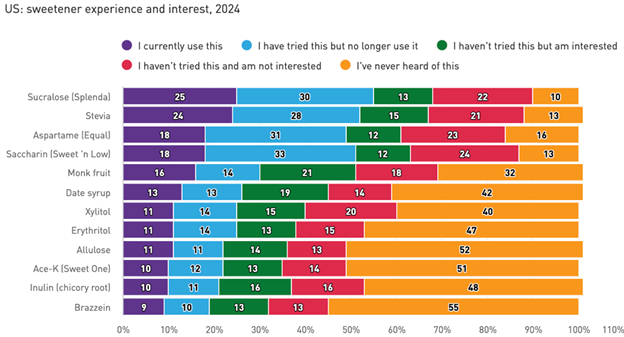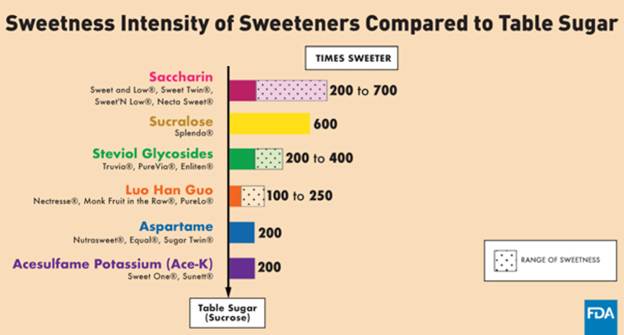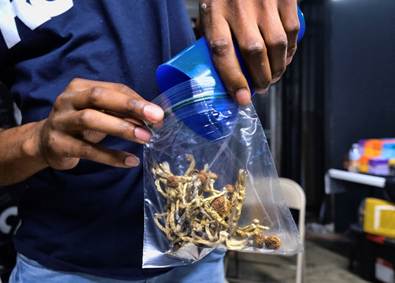Sugar substitutes are everywhere: splashed across “zero-sugar” sodas, stirred into your morning coffee, mixed into protein bars and powders that promise taste without the calories.
Whether or not we’ve been aware of these products beyond the diet section of the soda aisle, they’ve been a part of our food system for over a hundred years, and even among some indigenous populations for over a millennium.
Sugar substitutes became common last mid-century, with food manufacturers creating sweet-tasting treats for the diabetic population that wouldn’t spike their glycemic levels and insulin release. But now with the proliferation of keto, low-sugar, added protein, and net-zero carb products lining supermarket aisles, there’s a larger spotlight on alternative sweeteners.
Are these substitutes truly better for us than sugar, or a different route to the same metabolic potholes…or something worse?
Let’s break down the different types of substitute sugars, how they behave in the body, and what recent studies reveal about long-term health, including weight, heart, and cognitive outcomes.
What is a “sugar substitute”?
“Sugar substitutes” are lower or no-calorie compounds that add sweetness to foods and beverages with minimal effect on calories or insulin spikes. (If you’re looking for information on sugar and sweeteners, like table sugar, agave nectar, and honey, be sure to read this post.)
And it’s no wonder these sweet substitutes exist: we love sugary stuff, but it can wreak havoc on our health if we overindulge on sugary sodas, snacks, breakfast items, and desserts, just to list a few temptations.
That’s why about a quarter of U.S. adults use a sugar substitute daily – we want the sweetness, but not the calories and associated health risks.
Are sugar substitutes safe?
All sugar substitute products available for purchase in the United States have been reviewed and approved by the U.S. Food & Drug Administration.
 Generally regarded as safe, these products have few reported health risks when ingested, according to FDA guidelines and global regulatory bodies. Any potential adverse effects can be averted by not overusing these products.
Generally regarded as safe, these products have few reported health risks when ingested, according to FDA guidelines and global regulatory bodies. Any potential adverse effects can be averted by not overusing these products.
However, several reports show some of these sugar substitutes may have health risks of their own, including disruption of the gut microbiome and the gut-brain axis, increased neurological inflammation, and most ironically, weight gain and increased risk of diabetes.
Adding to the roster of health concerns, a recently released Brazilian study garnering worldwide media attention linked cognitive decline with various sweeteners, including aspartame, saccharine, ace-K, xylitol, and erythritol.
But, as cautionary as the health risks might feel, these studies require more research to be conducted as it relates to their causation of underlying health issues, as opposed to correlation – which is what many of these studies are based on. Plus, with any study, it’s important to examine data collection and assessment practices.
For instance, without a control group to isolate its findings, data collection methods for the Brazilian study require some scrutiny. Also, the researchers estimated consumption based on subjects’ indicated sweetener habits, not by measured intake. Because of this, more studies with stringent data collection protocols should be conducted before drawing any causal links, if any.
“While the finding that high consumption is linked to a faster decline is thought-provoking, it’s crucial to immediately highlight what the researchers themselves pointed out: this study shows a link, not a cause.
[This study] doesn’t prove that sweeteners are responsible for cognitive decline. It’s possible that other lifestyle factors associated with high sweetener consumption are at play.”
And lastly, no matter what any study reports or social media claims, not all bodies react the same way. Individual genetics, dietary patterns, predisposition to disease, and gut microbiome all play a role. While these products may not affect many of us, some may incur an unintended reaction due to our body’s particular composition and habits.
Sugar substitute categories
While all sugar substitutes are designed to satisfy our sweet tooth with fewer calories, each type is derived differently. Because of this, consumers often classify sugar substitutes into the following categories:
- Low or no-calorie artificial sweeteners are the most common additives in beverage products because they’re powerfully sweet with little to no energy
- Sugar alcohols are linked to sugar molecules but behave differently in digestion, rendering them lower calorie due to malabsorption
- “Natural sweeteners” are plant-derived or “rare” sugars gaining mainstream popularity
So let’s dive into each category to better understand them…
Artificial sweeteners: Do they help us lose weight?
Artificial sweeteners have been around for years, with saccharine pioneering the sweetener scene at the turn of the 19th century.
Though they’ve been around for a long time, these sweeteners became part of the household during the dieting trends of the 1960s and ‘70s. Since then, more players have entered the market, most notably aspartame, acesulfame-K, and sucralose – America’s preferred sugar substitute.

Though they may look and taste similar, each compound is unique. For instance, aspartame, a combination of two amino acids, gets digested in the small intestine, just like a protein. However, other popular sweeteners like sucralose, saccharin, and ace-K are largely unmetabolized in the body and simply excreted.
As far as using artificial sweeteners to lose weight, the results vary by use. In studies where no-calorie sweeteners replace sugar-sweetened beverages, you can see modest benefits: slight drops in body weight, fat mass, and sometimes improved risk markers.
However, if you swap water for a diet soda or eat a bunch of snacks labeled “sugar free”, there’s little to no evidence that link these sweeteners with weight loss. Worse yet, several studies link the consumption of artificial sweeteners to increased type 2 diabetes risk. Seems counterintuitive, right?
Implications beyond the waistline exist, too. Several studies have shown that sucralose, saccharine, and ace-K can disrupt the gut microbiome, leading to various health risks. But, remember, these correlational studies do not identify these sweeteners as the sole contributor to these health risks.
Though it’s easy to assume that overuse of these substitutes may lead to weight gain and diabetes, we can equally assume that these sweeteners can act as proxies for a broader pattern of repeated attempts to curb our weight via fad diets and food products.
And these concerns aside, sweeteners can help when used in place of sugar, especially for those consuming high sugar loads.
Sugar alcohols: Is it worth having no sugar spike?
Sugar alcohols, like erythritol, xylitol, sorbitol, and maltitol, have been around for over 100 years, when scientists discovered these ‘polyols’ by hydrogenating traditional sugars, like glucose. This led to a low-calorie product with a pleasant, sweet taste.
In the 1950s, doctors found that these sugar alcohols had no effect on blood glucose and inulin responses. Thus, they were quickly introduced into “diabetic-friendly” food and medical products, like cough syrups and oral suspensions. Doctors also discovered its anti-cavity properties, making sugar alcohols a beneficial addition to dental products and chewing gums. Today, they’ve been added to more trendy products, like net-zero carb protein bars and powders.
What makes sugar alcohols unique is their slow absorption in the small and large intestines. However, they can sometimes cause gastrointestinal distress when consuming more than the FDA’s recommended intake, especially with larger-molecule sugar alcohols like maltitol and isomalt.
Several studies found sugar alcohol’s potential ill effects beyond the gut. A recent paper linked elevated plasma levels of erythritol and xylitol to a greater risk of major adverse cardiovascular events, including stroke and heart attacks resulting from blood clots. However, an investigative report in the Journal of Toxicology and Regulatory Policy found “no evidence that erythritol causes adverse health effects in humans at exposure levels commonly found in foods and beverages.”
Natural sweeteners: A health halo?
To many, natural sweeteners feel safer, more wholesome, and less processed.
Take a look at stevia: this South American herb has been used by indigenous tribes for more than 1,500 years. However, with its naturally greenish-brown color and bitter taste, Western consumers found it a bit too “natural”. But in the late ‘90s, stevia got a food processing makeover, refining the herb to look like traditional sugar substitutes.
Though not all stevia products are harvested from the herb itself, consumers still find the product widely appealing, boosting it to the #2 spot in sugar substitute popularity. Furthermore, it doesn’t raise blood sugar levels: stevia, like fiber, is digested in the gut, metabolized very little in the liver, and then flushed out of the body.
And now other natural sweeteners are on the rise, including:
Monk fruit
Extracted from a melon in southern China, the rind and pulp of these fruits yield intense sweetness with negligible calories. To reduce its sweetness and make it look more palatable, monk fruit products are often blended with another sugar substitute, like erythritol or allulose. It doesn’t raise blood sugar levels and is digested and excreted, like stevia.
Allulose
This “rare sugar”, occurs in figs, raisins, and maple syrup, and has about 70% the sweetness of table sugar but only 5% of sugar’s caloric load. Allulose is ideal for drinks, baked goods, and as a sweetener. It incurs minimal metabolization in the body, leaving blood sugar levels unaffected. Allulose may have benefits, as well: a study published in Nutritional Neuroscience reported it can alleviate metabolic and cognitive issues in prediabetic rats. However, this is the only study reporting these results at this time.
Tagatose
Another “rare sugar”, tagatose has sweetness similar to sucrose, with a trace presence found in dairy products, apples, oranges, and pineapples. Because it has about 40% of sugar’s caloric load, it doesn’t cause a glucose spike, per se, but will raise blood sugar levels. And because it has more calories than other substitutes, the liver has more to metabolize after it gets absorbed in the gut.
Chicory root
Though this herb is not as sweet as sugar, it’s often used to replace some of the sugar content in food products and may also include other sugar substitutes to further reduce caloric load. Also called inulin, this functional fiber adds bulk, retains moisture, and creates a pleasant mouthfeel to baked goods and shelf-stable snacks. It’s slowly digested in the large intestine, which makes it a great prebiotic and creates a longer-lasting feeling of fullness. But that comes at a price when overconsumed: its high fiber concentration can create notable gastrointestinal distress.
Modifying your Desired Level of Sweetness
The problem isn’t necessarily sugar or sugar substitutes – it’s often that we get used to the level of sweetness these compounds provide.
Making matters harder for us is that many of these sugar substitutes are multitudes sweeter than sugar – I’m talking about 300 times sweeter, like stevia and monk fruit. And when we’re frequently exposed to this level of sweetness, our palate and our brain come to expect it, thus creating a viciously sweet cycle.
What can we do to monitor our sweetness consumption? Here are some practical tips to get you started:
- First, determine how much you’d like to reduce sweet products from your diet. Are you still sticking with one diet soda per day that replaced its sugary counterpart? Maybe you’re all set! Or maybe you’ve started chewing more gum or eating more sugar-free mints since moving to diet soda. Take a good, hard look.
- Next, plan small steps you can take to move in that direction. Are you consuming regular soda? Perhaps consider swapping in diet soda as a short-term goal to reduce your sugar intake. And when you get used to that, start introducing flavored seltzers into your diet. Before you know it, you’ve curbed your desired sweetness level. The same goes for snacks…consider eating fruits and whole foods on occasion instead.
- Consider your personal health concerns. If you have cardiovascular risk, consider stevia. If you’re prediabetic, maybe erythritol is a good option. And if you have digestive issues, try allulose.
- Make a conscious effort to practice moderation. Use sugar substitutes as a tool, not a crutch. Pair them with nutrient-dense whole foods and focus on retraining your palate to appreciate natural sweetness again.



 While still true, these guidelines often fail to capture the complexity of human biology—and the individuality of how we metabolize food.
While still true, these guidelines often fail to capture the complexity of human biology—and the individuality of how we metabolize food.
 Emerging platforms
Emerging platforms 
 Samsung Food’s Vision AI easily scanned items in my fridge, sometimes correctly identifying even partially used produce, and generated recipes that incorporated what I already had on hand. It wasn’t perfect (a few mystery leftovers stumped it), but the suggestions often saved me from another night of takeout.
Samsung Food’s Vision AI easily scanned items in my fridge, sometimes correctly identifying even partially used produce, and generated recipes that incorporated what I already had on hand. It wasn’t perfect (a few mystery leftovers stumped it), but the suggestions often saved me from another night of takeout.


















 Advocates claim it reduces inflammation, improves mental clarity, and helps manage glucose levels, and promotes weight loss. However, the reported benefits of this diet are more anecdotal than clinical. In fact, multiple studies cite the dangers of this diet, including
Advocates claim it reduces inflammation, improves mental clarity, and helps manage glucose levels, and promotes weight loss. However, the reported benefits of this diet are more anecdotal than clinical. In fact, multiple studies cite the dangers of this diet, including 
 For instance, high consumption of saturated fats like beef tallow – which
For instance, high consumption of saturated fats like beef tallow – which  Yes, ACV can slightly
Yes, ACV can slightly  Experts generally agree that most people, especially women and older adults,
Experts generally agree that most people, especially women and older adults, 













 When it comes to understanding our food – especially things like health and nutrition – professional standing means a great deal. You trust scientists, educators, doctors, and healthcare professionals. Close behind, you once again value the opinion of people close to you, notably family and friends.
When it comes to understanding our food – especially things like health and nutrition – professional standing means a great deal. You trust scientists, educators, doctors, and healthcare professionals. Close behind, you once again value the opinion of people close to you, notably family and friends.
















